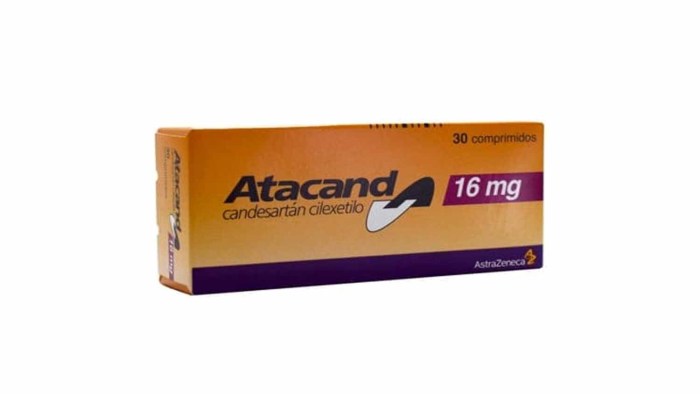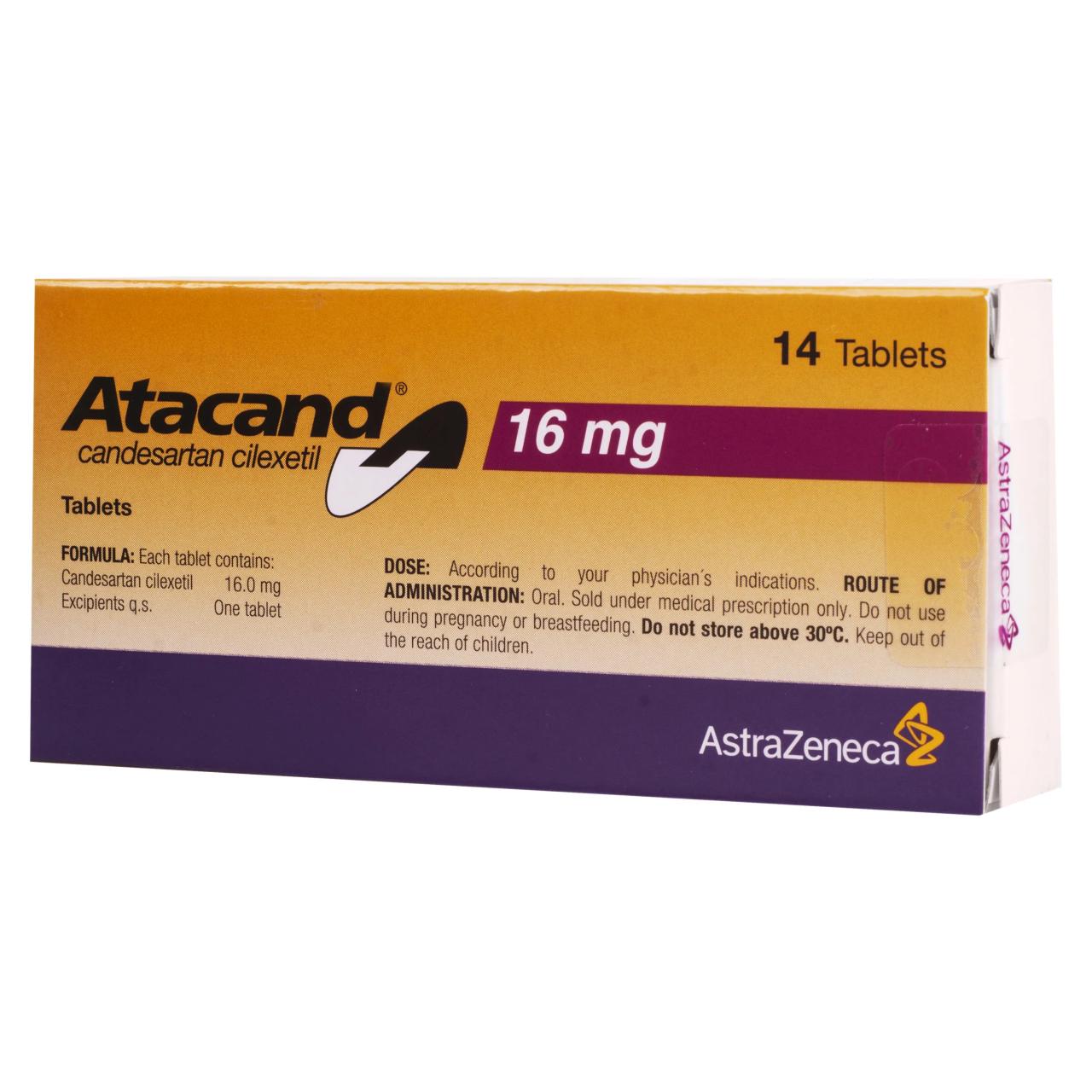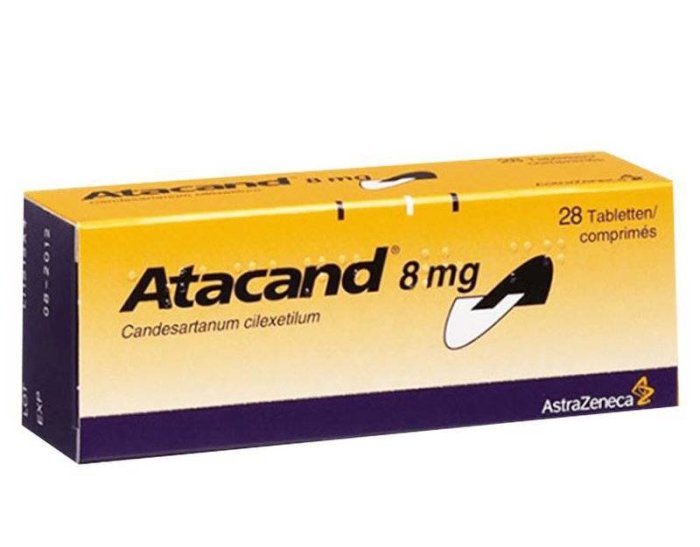Atacand, also known as Candesartan cilexetil, is a medication widely used to manage high blood pressure, or hypertension. It works by relaxing blood vessels, allowing blood to flow more easily and reducing pressure on the heart. Atacand is a potent medication that has proven effective in controlling blood pressure and reducing the risk of heart attacks, strokes, and other cardiovascular complications.
Atacand is available in various forms, including tablets and oral solutions, making it convenient for patients to take. While Atacand is generally well-tolerated, like all medications, it can have potential side effects. Understanding the potential risks and benefits is crucial for patients and healthcare professionals to make informed decisions about its use.
Atacand

Atacand, also known by its generic name candesartan cilexetil, is a prescription medication used to treat high blood pressure (hypertension). It belongs to a class of drugs called angiotensin II receptor blockers (ARBs).
Atacand: An Overview
Atacand works by blocking the effects of a hormone called angiotensin II. Angiotensin II is a powerful vasoconstrictor, meaning it narrows blood vessels. By blocking angiotensin II, Atacand helps to relax and widen blood vessels, which lowers blood pressure.
Dosage Forms and Strengths
Atacand is available in several dosage forms and strengths:
| Dosage Form | Strengths |
|---|---|
| Tablets | 4 mg, 8 mg, 16 mg, 32 mg |
Atacand and Hypertension
Atacand, also known as candesartan cilexetil, is an effective medication used to manage high blood pressure (hypertension). It belongs to a class of drugs called angiotensin II receptor blockers (ARBs). ARBs work by blocking the action of a hormone called angiotensin II, which constricts blood vessels and raises blood pressure.
Effectiveness of Atacand
Atacand has been proven to be effective in lowering blood pressure and reducing the risk of heart attacks, strokes, and other cardiovascular complications in patients with hypertension. Studies have shown that Atacand can effectively lower systolic blood pressure (the top number in a blood pressure reading) by 10-15 mmHg and diastolic blood pressure (the bottom number) by 5-10 mmHg.
Comparison with Other Antihypertensive Medications
Atacand is generally well-tolerated and has a similar efficacy profile to other antihypertensive medications, such as ACE inhibitors (angiotensin-converting enzyme inhibitors) and calcium channel blockers. However, it is important to note that each individual’s response to medication may vary, and the best choice of medication will depend on individual factors, such as medical history, other medications being taken, and potential side effects.
Potential Side Effects of Atacand
Like all medications, Atacand can cause side effects, although not everyone experiences them. Some common side effects include:
- Dizziness
- Headache
- Fatigue
- Cough
- Diarrhea
- Muscle cramps
In rare cases, more serious side effects can occur, such as:
- High potassium levels in the blood
- Kidney problems
- Liver problems
- Angioedema (swelling of the face, lips, tongue, or throat)
If you experience any serious side effects, it is important to contact your doctor immediately.
Potential Drug Interactions
Atacand can interact with other medications, which can affect how either medication works or increase the risk of side effects. Some potential drug interactions include:
| Medication | Interaction |
|---|---|
| Potassium supplements or salt substitutes | Increased risk of high potassium levels in the blood |
| Lithium | Increased risk of lithium toxicity |
| NSAIDs (nonsteroidal anti-inflammatory drugs) | Reduced effectiveness of Atacand |
| Diuretics | Increased risk of low blood pressure |
It is important to inform your doctor about all medications, including over-the-counter medications, herbal supplements, and vitamins, that you are taking before starting Atacand.
Atacand and Patient Safety

Atacand, like all medications, comes with potential risks and benefits. It’s crucial to understand these aspects and to consult with a healthcare professional before taking Atacand. This ensures that the medication is appropriate for your individual needs and health condition.
Consulting a Healthcare Professional
Before starting Atacand, it’s vital to consult with a healthcare professional. This is essential for several reasons:
- To determine if Atacand is the right medication for your specific condition and needs.
- To discuss any potential risks and benefits associated with taking Atacand.
- To ensure Atacand doesn’t interact with other medications you might be taking.
- To identify any pre-existing medical conditions that could be affected by Atacand.
- To receive personalized instructions on how to take Atacand safely and effectively.
Atacand and Pregnancy and Breastfeeding
Atacand is classified as a Category C drug during pregnancy. This means that studies in animals have shown adverse effects on the fetus, and there are no adequate and well-controlled studies in pregnant women.
Atacand should be used during pregnancy only if the potential benefit justifies the potential risk to the fetus.
Atacand is excreted in breast milk. It’s important to discuss the potential risks and benefits with your healthcare provider before breastfeeding while taking Atacand.
Precautions and Contraindications
Atacand, like any medication, has certain precautions and contraindications. These are important to consider to ensure safe and effective use:
- Kidney Problems: Atacand can affect kidney function, especially in individuals with pre-existing kidney problems. Your healthcare provider may need to monitor your kidney function while taking Atacand.
- Liver Problems: Atacand can affect liver function. Your healthcare provider may need to monitor your liver function while taking Atacand.
- Low Blood Pressure: Atacand can lower blood pressure. This can be a concern for individuals with low blood pressure or those at risk of developing low blood pressure.
- Allergic Reactions: Some individuals may experience allergic reactions to Atacand. If you experience any symptoms of an allergic reaction, such as rash, itching, swelling, or difficulty breathing, stop taking Atacand and seek immediate medical attention.
- Potassium Levels: Atacand can increase potassium levels in the blood. Your healthcare provider may need to monitor your potassium levels while taking Atacand.
Patient Education Guide for Storage and Disposal
Proper storage and disposal of Atacand are crucial to ensure its effectiveness and safety:
- Storage: Store Atacand at room temperature, away from light and moisture. Do not store it in the bathroom or in a humid place.
- Disposal: Do not flush Atacand down the toilet or pour it down the drain. Dispose of it properly as instructed by your healthcare provider or local regulations. This often involves returning unused medication to a pharmacy or a designated disposal program.
Atacand Research and Development

Atacand, the brand name for candesartan cilexetil, has undergone extensive research and development to establish its efficacy and safety as an antihypertensive medication. This section delves into the key clinical trials, latest research findings, ongoing research efforts, and major milestones in the development of Atacand.
Key Clinical Trials
Numerous clinical trials have been conducted to assess the efficacy and safety of Atacand in treating hypertension. These trials have evaluated Atacand’s ability to lower blood pressure, its impact on cardiovascular outcomes, and its safety profile.
- The CHARM (Candesartan in Heart Failure with Reduced Ejection Fraction) trials were landmark studies that demonstrated Atacand’s effectiveness in reducing cardiovascular mortality and morbidity in patients with heart failure. These trials included CHARM-Alternative, CHARM-Added, and CHARM-Preserved.
- The SPRINT (Systolic Blood Pressure Intervention Trial) study, which evaluated the benefits of intensive blood pressure control, showed that Atacand was associated with a significant reduction in cardiovascular events in patients with high blood pressure.
- The VALUE (Valsartan Antihypertensive Value in Elderly Individuals with Isolated Systolic Hypertension) trial demonstrated the efficacy of Atacand in treating isolated systolic hypertension, a common form of hypertension in older adults.
Long-Term Effects of Atacand
Long-term studies have provided valuable insights into the long-term effects of Atacand.
- Studies have shown that Atacand can effectively control blood pressure over extended periods, reducing the risk of cardiovascular events such as stroke, heart attack, and heart failure.
- Atacand has also been shown to have a favorable safety profile in long-term use, with minimal side effects reported.
Ongoing Research on Atacand
Research on Atacand continues to explore new applications and further refine its use in treating cardiovascular conditions.
- Ongoing research is investigating the potential benefits of Atacand in managing other cardiovascular conditions, such as diabetic nephropathy and atrial fibrillation.
- Researchers are also exploring the use of Atacand in combination with other medications to optimize blood pressure control and reduce cardiovascular risk.
Timeline of Atacand Development
The development of Atacand has been marked by significant milestones:
| Year | Milestone |
|---|---|
| 1996 | Atacand is approved by the U.S. Food and Drug Administration (FDA) for the treatment of hypertension. |
| 1999 | The CHARM trials begin, demonstrating Atacand’s effectiveness in treating heart failure. |
| 2009 | The SPRINT trial is published, highlighting the benefits of intensive blood pressure control with Atacand. |
| 2010 | The VALUE trial is published, showing Atacand’s efficacy in treating isolated systolic hypertension. |
Atacand plays a significant role in managing hypertension, offering a valuable tool for individuals seeking to control their blood pressure and prevent serious health complications. However, it’s important to remember that Atacand should only be used under the guidance of a healthcare professional. By understanding the mechanism of action, potential side effects, and interactions, patients can make informed decisions about their treatment and work collaboratively with their doctors to achieve optimal health outcomes.
Atacand, a popular medication for high blood pressure, works by relaxing blood vessels. Similar in its mechanism is bosentan , a medication used to treat pulmonary arterial hypertension. While both medications target the vascular system, they differ in their specific applications and side effects. Atacand is generally well-tolerated, but it’s crucial to consult a doctor for proper dosage and potential interactions.